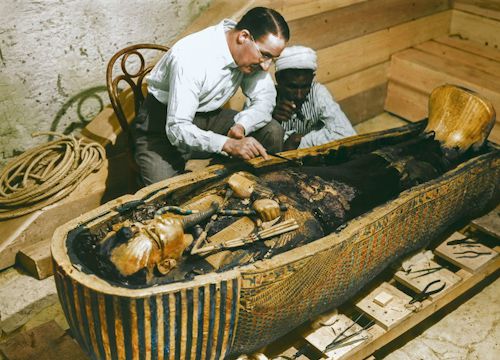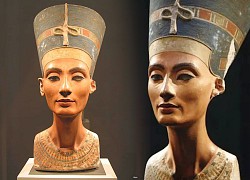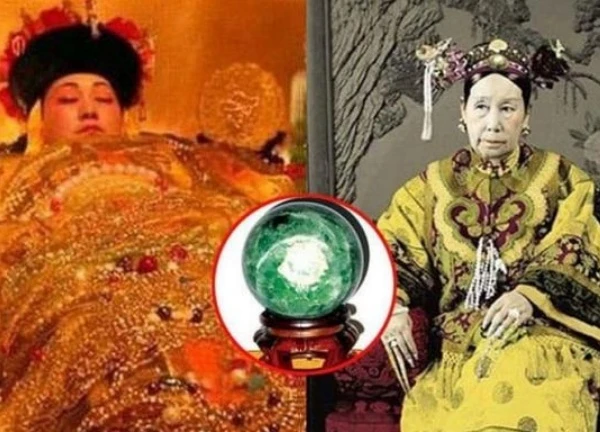The mummification trick of the ancient Egyptians: After thousands of years, it still amazes people

2 | 0 Discuss | Share
Inbreeding was common among royal families from east to west in ancient times, but usually only at the level of cousins marrying. But in ancient Egyptian dynasties, full siblings also became husband and wife.
Among the many traditions and cultures here, one particularly strange ancient Egyptian tradition is the custom of pharaohs marrying their sisters. At first glance, this practice may seem unusual, even taboo, to modern sensibilities. However, in the context of ancient Egyptian culture, it was deeply ingrained in religious beliefs, political strategies, and social norms.
Among the general population, brother-sister marriages were common during the Roman period of Egyptian rule – from 30 BC to AD 395 – but were rarer in earlier periods, according to ancient records. Meanwhile, ancient Egyptian royals sometimes married siblings – a practice that may have reflected religious beliefs – and pharaohs sometimes married their own daughters.
"The question of brother-sister marriage in ancient Egypt has been discussed a lot," says Marcelo Campagno, an independent scholar with a PhD in Egyptology.
Examples of Egyptian rulers who married brother and sister include Senwosret I (reigned c. 1961 BC–1917 BC), who married his sister Neferu; Amenhotep I (reigned c. 1525 BC–1504 BC), who married his sister Ahmose-Meritamun; and Cleopatra VII (reigned c. 51 BC–30 BC), who married her brother Ptolemy XIV before he was murdered...
Many Egyptian royals engaged in brother-sister marriages to emulate the practice of Osiris and Isis, two Egyptian gods who were siblings and married each other.
"Osiris was one of the most important gods in Egyptian religion. His consort, Isis, was also his sister in some ancient Egyptian cosmological views. So royal marriages were meant to emulate Osiris and Isis, and to maintain their image as earthly gods," says Leire Olabaria, a lecturer in Egyptology at the University of Birmingham in the UK.
Campagno agrees that the Osiris-Isis marriage helps explain why brother-sister marriage was practiced by Egyptian royalty.
Among non-royals, brother-sister marriage does not seem to have become common until Roman rule.
Olabaria cautions that it can be difficult to detect brother-sister marriages after the start of the New Kingdom (around 1550 BCE to 1070 BCE) because of changes in the way Egyptians used words. For example, "The term 'snt' is usually translated as 'sister,' but in the New Kingdom it also began to be used for wife or lover," Olabaria says.
Brother-sister marriages may indeed have taken place, writes Sabine Huebner, a professor of ancient civilizations at the University of Basel in Switzerland. Parents who did not have sons might have wanted this arrangement, as it meant the husband would move into their home instead of their daughter leaving.
"This was important for the financial stability of parents as they aged. This practice of formally adopting a son-in-law occurred in other ancient societies, including Greece," Huebner writes.
There are other possible explanations for why brother-sister marriage was common in Roman Egypt. Olabaria says it is possible that parents encouraged it so that their property and wealth would not be divided up too much upon their death. Campagno notes that the practice seems to have occurred largely among a Greek population, and Olabaria says brother-sister marriage may have been used as a marker of identity for Greek Egyptians.
The impact of genetics and health on the royal family
Genetically, children born to close relatives are at higher risk of having recessive genetic disorders. This is because close relatives are more likely to carry the same recessive gene, and when both parents pass on a copy of that gene, the child may exhibit the associated disorder.
Historical records and archaeological finds show that some members of the Egyptian royal family exhibited health problems. For example, King Tutankhamun, one of the most famous pharaohs, is believed to have suffered from a number of health problems.
Modern analysis of his remains reveals conditions such as cleft palate, clubfoot, and other skeletal deformities. Genetic studies have shown that his parents may have been siblings.
Similarly, other mummies of royal lineage also show signs of disease and deformities, possibly due to the practice of intermarriage. Culturally, the ancient Egyptians were aware of the concept of heredity, which is evident in their emphasis on lineage and bloodline.
However, their understanding of genetics and genetic diseases was not as advanced as it is today. It is likely that the pharaohs, motivated by religious and political beliefs, did not fully understand the potential health implications of sibling marriage.
Even if they recognized certain health problems in their lineage, religious and political imperatives may have overridden these concerns.
The powerful Queen Nefertiti of ancient Egypt, the most beautiful woman in history and the mysterious disappearance  Hoàng Anh2 years agoTalking about history, Egypt is one of the countries with the oldest civilization in the world. In it, the beautiful and powerful queens are huge contributors to the world history cycle. The most prominent, perhaps, not to mention the most powerful and beautiful queen in...
Hoàng Anh2 years agoTalking about history, Egypt is one of the countries with the oldest civilization in the world. In it, the beautiful and powerful queens are huge contributors to the world history cycle. The most prominent, perhaps, not to mention the most powerful and beautiful queen in...

2 | 0 Discuss | Share

5 | 0 Discuss | Share

5 | 0 Discuss | Share

5 | 0 Discuss | Share

4 | 0 Discuss | Share

2 | 0 Discuss | Share

4 | 0 Discuss | Share

2 | 0 Discuss | Share

3 | 0 Discuss | Share

2 | 0 Discuss | Share

2 | 0 Discuss | Share

2 | 0 Discuss | Share










3 | 1 Discuss | Report